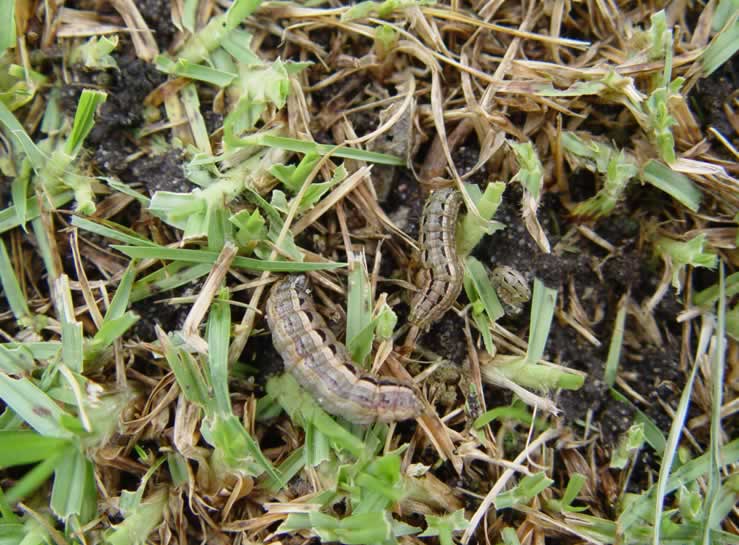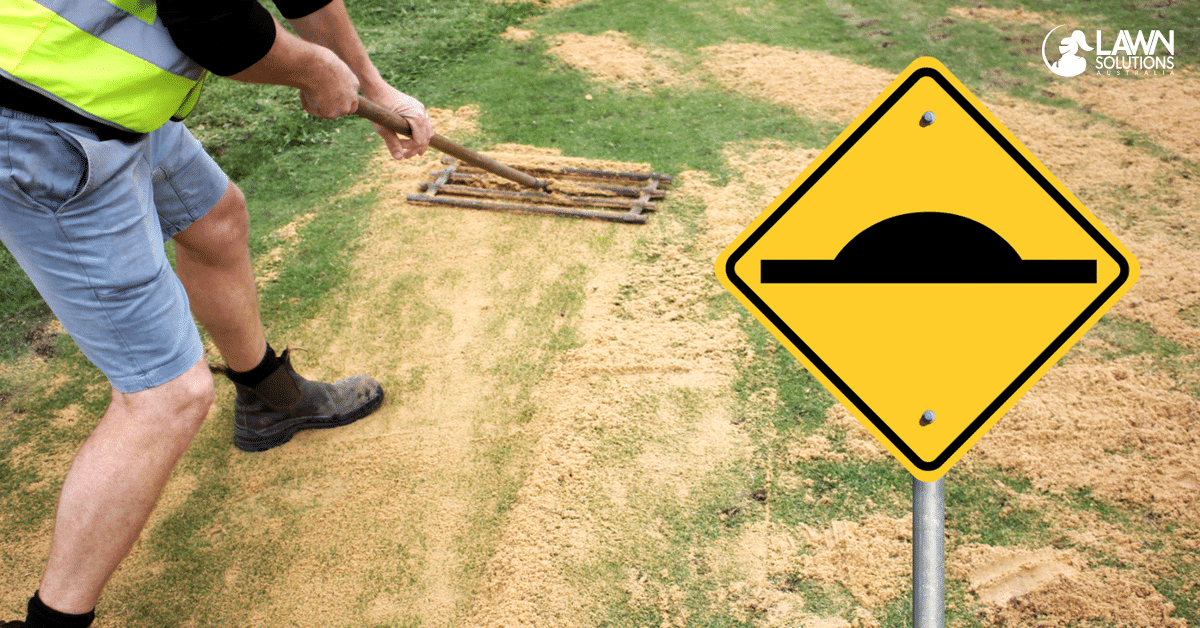How to Revive Dead Grass
How To Bring Back Dead Grass
Dead grass in your yard is an eyesore and can impact your home’s aesthetics.
Fortunately, there is hope. Believe it or not, there are different ways to revive dead grass without it costing a fortune.
There are a few reasons why you may have a dying lawn. More often than not, what looks like dead grass on your brown lawn may not be what it appears to be.
You may simply be dealing with dormant grass which can still be revived, instead of dead grass.
That is why, before taking any action, it’s important to clearly identify what’s causing your dead lawn.

Dead or Dormant Grass
If you are dealing with a brown lawn, one of the most important things you need to do is to make sure whether what you have is a dead lawn or a dormant lawn.
Warm season grasses generally hibernate in the winter, turning their colour from green to brown. On the other hand, the opposite is true for cool-season grasses as they hibernate during drought or dry season.
Hibernation allows these grasses to turn brown to minimize their metabolic activity and conserve energy. Grasses in hibernation are not yet dead grass.
One of the easiest tests to see if your grass is dead is by pulling a handful of the brown blades.
When you pull the blades and the grass comes out easily including the grassroots, the grass is most likely dead and can no longer be revived. You will need to remove the dead grass and install new turf.
However, if the blades stay firm in place or it requires extra effort to pull from the ground, it is not dead grass but simply dormant grass. Dormant grass can still be revived to give you a healthy lawn.

Different Ways to Revive Dead Grass
There are different ways to revive dead grass, depending on what caused your lawn to turn brown.
Water properly
If your dead lawn appears to worsen during drought conditions or limited rainfall, it can be a sign of a dormant lawn due to dry soil.
The brown grass should once again become healthy grass as rainfall increases. However, instead of waiting for the rain to come, you can spruce up your entire lawn by watering the grass.
If there isn’t much rainfall, you can revive dead grass on your lawn by giving about an inch of water a week using a lawn sprinkler.
Make sure to reach every spot of your lawn to avoid getting dead patches. To avoid lawn disease and water wastage, it’s important to water early in the morning before the sun’s heat burns off the water on a sunny day.
Restore your soil’s pH balance
When the soil’s pH level is too acidic or alkaline, plants can suffer from iron deficiency called iron chlorosis.
This condition can lead to yellowish leaves in grasses and in severe cases can lead to brown grass.
Check your soil’s pH level using a soil testing kit. If a soil test shows a pH level above 7.2, it means that the soil is acidic. To revive dead grass, apply sulfur to your whole lawn.
As a rule of thumb in applying sulfur, the higher the pH level of the soil and the more clay soil it has, the more sulfur you need to apply.
If you are buying sulfur from your local garden store, they can also advise you on how much to apply to your lawn.
Fill the digging zone with loose and cool dirt or sand. To encourage your dog to play in the area, bury chew toys, bones and other treats at the surface level.
If you already installed a digging zone, it’s important to keep your dog interested in it. Make it an appealing place for digging by adding more things interesting to your dogs such as bones and new toys from time to time.
If your dog still digs in other areas of your lawn, bring its attention back to the digging zone by praising or giving rewards when digging occurs inside the pit.
Reduce foot traffic
If your existing lawn went dormant due to extreme weather conditions, frequently stepping on the grass could cause dormant grass to eventually die.
Walking on the already dying grass can damage the root systems and impose unnecessary stress on the grass.

Beat the fertiliser burn
If you recently applied fertiliser on your lawn, the excess salt from the fertiliser could burn the grass, leading to brown patches.
Your lawn has a condition called “fertiliser burn” if the brown spots appear about two days after.
You need to act fast to revive your lawn from fertiliser burn. Water the grass until the ground is fully saturated to leach excess fertiliser out of the grassroots.
Regular watering is also required for the next seven days to flush out any remaining fertiliser from the roots.
In the future, make sure to follow the manufacturer’s recommended amount and frequency when fertilising.
To improve absorption and reduce the risk of fertiliser burn, you could use slow-release fertilisers. Or, you can try using organic compost or decomposing plant materials as natural fertilisers.
Remove weeds
When your grass is coming out of its dormant state, it’s also the best time to remove unwanted vegetation and weeds.
Any additional and unwanted vegetation in your lawn can siphon water and vital nutrients that would otherwise go to the grass.
The easiest way to remove weeds is often herbicides; however, as a cheaper and more environmentally-friendly option, you could manually dig up weeds.
This is a practical option if you have a small lawn. For bigger lawns, you could apply a selective herbicide (as opposed to nonselective herbicide) that only targets weeds and leaves your grass undamaged.
You can then follow up by applying pre-emergent herbicide to prevent new weed seeds from growing.

Check for grubs
The larvae of beetles called ‘grubs’ spend their summer feeding on the roots of grass. As the grass decays, you will notice brown patches on your lawn.
To check if this is the problem, dig into the soil’s surface and look for milk-white tiny creatures that are curled into a C-shape. If you fine multiple grubs in your lawn, it is likely that you have a grub infestation.
You can get rid of grubs by applying grub control over your yard. After a few weeks, you should notice new green shoots of grass starting to grow.
Prevent fungi-infestation
Fungus thrives in humid, hot and moist environments. In the turfgrass industry, this is one of the common problems that affect yards across the country.
One of the common symptoms of this problem is the thinning out of grass in a ring-like pattern as they turn brown in color. It could affect a large area of your lawn, causing more dying grass if not adequately addressed immediately.
If your lawn is suffering from fungi-infestation, apply fungicide to the affected areas. Alternatively, you could also contact a lawn-care specialist if the problem is already widespread.
To prevent future infestation, avoid over-watering your lawn, especially in the afternoon and evenings. Mowing your lawn weekly could also help reduce fungal disease. Additionally, it’s a good idea to aerate your lawn twice a year.
Prevent pets from urinating in your yard
If you have dogs or pets that love to play on your yard, it is most likely that they will also urinate on the grass.
As canine and feline urine contains salt, it can cause crispy brown patches that aren’t likely to recover on their own.
You can revive grass that has been peed upon by your pets by adding a thin layer of ground limestone on the soil to restore that pH level. Leave the limestone on your yard for a week before covering it with top soil.
To prevent your pets from urinating anywhere in your lawn, you could create an area with mulch or sand and let your pet pee there.
Mow your lawn regularly
While mowing isn’t required while your yard is dormant, once the grass starts to wake up, you can start mowing again. Making sure that you don’t scalp your lawn by completely removing the brown grass.
New grass is expected to grow around the old grass. You can leave your clipping on the grass to help fertilize the soil and provide additional nutrients to the grass.
Top-dress your lawn
Top dressing your lawn is more like a preventive measure to prevent dead grass because of insufficient nutrients in the soil.
This method involves spreading a thin layer of compost materials on your lawn to boost the nutrient density of the soil.
Rain or regular watering will then allow the natural fertilizer to leach into the roots, helping new seed or old grass to grow healthier.

New Grass Seed versus Sod Pieces
If you still continue seeing brownish or whitish area in your lawn despite all your efforts, it may be time to move on by planting new seed or laying sod pieces.
Grass seeds may be easy to scatter and may be the more economical choices but they take longer to grow and develop into a new lawn. On the other hand, sod or turf can create an instant lawn as it already has roots ready to flourish.
Laying new grass can be a bit challenging if it is your first time. If you are fixing dead spots in your lawn, you should match new turf to the existing type to ensure your lawn looks its best.
However, if you are getting an entirely new lawn, you should consider which lawn type will be best for your location, climate and soil.
There are different grass types available so if you can’t decide, you could get advice from your local garden center or the turf installer in your area. Once you have selected the type of grass to plant, you also need to prepare the soil or ground.
First, you need to remove any dead grass on the lawn. You could then use a lawn roller which is a heavy equipment designed to flatten the top soil to smoothen your bumpy yard.
You also need to loosen the compacted soil and break the clumps. And before planting, make sure to water the soil well to encourage speedy growth.
Once the ground is ready, you can start laying the turf.
Laying turf is a bit challenging to install so it’s highly recommended to hire a lawn care installer who can assist you.

read more!
recent posts
Poolside Turf: Choosing and Maintaining Grass Around Pools
There’s nothing quite like stepping out of a swimming pool onto soft, lush grass. But when it comes to finding the best grass for around a pool, not all lawns are created equal. Chlorine pools, heavy foot traffic, and the unforgiving Australian sun can take a toll on...
Keeping Your Lawn Green and Healthy During the Summer Heat
Discover the best grass options for your lawn with our complete guide. Make informed choices for a lush, healthy yard. Read more to find your ideal grass!
Summer Lawn Weeds: Prevention and Management
Discover the best grass options for your lawn with our complete guide. Make informed choices for a lush, healthy yard. Read more to find your ideal grass!
The Ultimate Watering Guide for Summer Lawns
Discover the best grass options for your lawn with our complete guide. Make informed choices for a lush, healthy yard. Read more to find your ideal grass!

Our Turf
TifTuf Bermuda
Buy Turf Online © 2019 All Rights Reserved. | Proudly Designed and Developed by Sydney ICT




